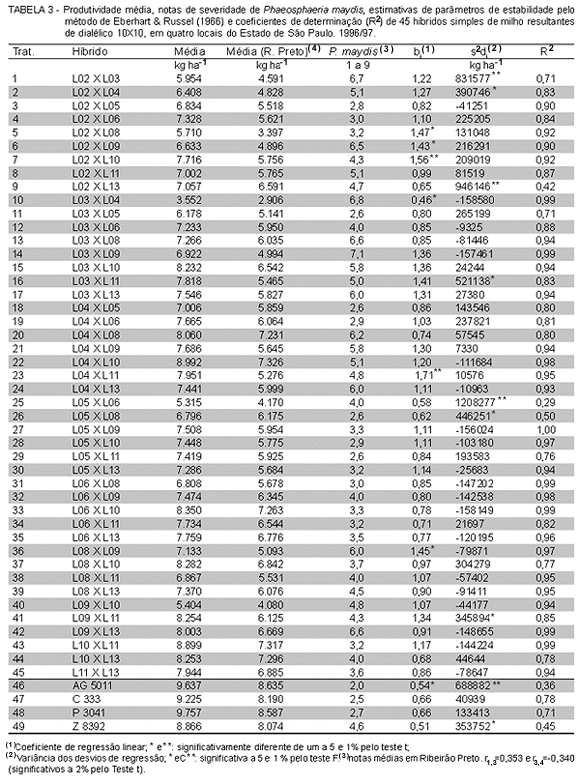Single-cross hybrids of maize obtained from diallell crosses among ten inbred lines from CIMMYT were grown in four locations of the State of São Paulo, Brazil, during 1996/97, to evaluate stability and adaptability of grain yield. The experiments were set up in a randomized block design with three replications, including four comercial controls. High predictability of grain yield and general adaptability (b=1,0) was observed for most hybrids, indicating that the lines are a potential source of heterosis as well as for good adaptability. A severe infestation of Phaeosphaeria maydis leaf spot occured in Ribeirão Preto, representing a stress factor responsible for reduction of environmental quality. The disease was assessed about 30 days after flowering, using a scale of grades of 1 to 9, for 0% and 80% of the leaf area affected in the adult plant, respectively. There was a tendency of the more resistant materials to show adaptability values lower than 1.0 (b<1.0), being the single correlation between disease evaluation and the regression coefficient b (r=0.353) significant at a 2% t test. Hybrids L04XL10 and L10XL11 showed highest grain yield values, similar to the checks, and presenting stability also. It was noted that L10XL11 was resistant to Phaeosphaeria leaf spot.
Zea mays; Phaeosphaeria maydis; adaptability; stability; hybrids



